Spring 2000 An informal peep into the wild flora at our home ( by Paul James, UK ) |
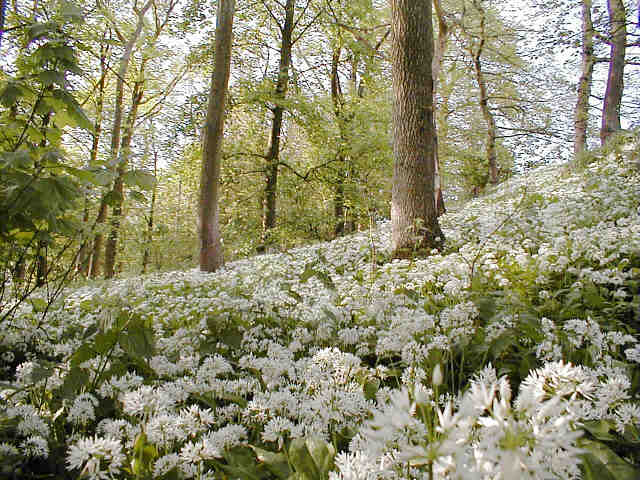 |
Spring 2000 An informal peep into the wild flora at our home ( by Paul James, UK ) |
 |
This spring produced a particularly abundant wealth of wild flowers here in our locality in North Wales. The cause I think was unusual weather conditions, which delayed progress during the late cold spell, and when the summer-like 'spring' came quickly upon us, the ground dried up more rapidly than usual for the time of year, which encouraged the flora to flower in delightful abundance.
Local Conditions
The top soil here rests on boulder clay which in turn overlays a partially exposed limestone ridge, and the ground can dry rapidly because of its southerly sloping aspect , though there is plenty of shade in the woodlands and extensive hedging. The area is approximately 500 ft above sea level, and temperatures are generally mild with an annual rainfall of about 34 inches.
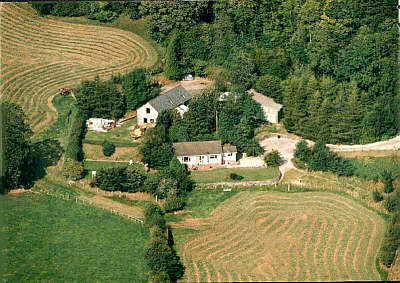 |
Aerial View in Summer 1997 |
Farming in the area is mostly confined to the rearing and fattening of cattle and sheep, and about a quarter of the land area is woodland, although this varies considerably in other localities.
The native trees are Sessile Oak, Ash, Cherry, Walnut, Field Maple, Hawthorn, Birch, Sycamore, Beech and Holly. The handsome Wych Elm was a very common tree here, but the 'Dutch Elm disease' has killed off most leaving only a handful of hopefully resistant individuals.
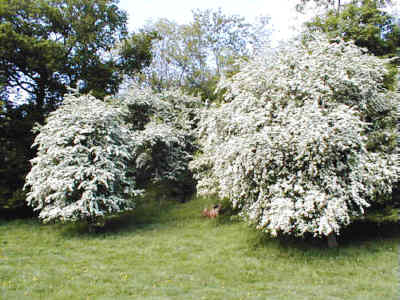 |
May Blossom ( Hawthorn ) |
Hedges are generally made up of Hawthorn, Holly, Blackthorn, Hazel, Elder, Crab Apple, Wild Plum, and Gorse is found on the shallower soils on the limestone ridge.
The following is a simple collection of images of the more common flower species and plants taken around the fields, hedges and woods of our smallholding in the last month or so.
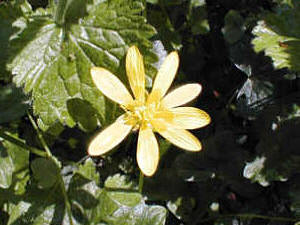 |
 |
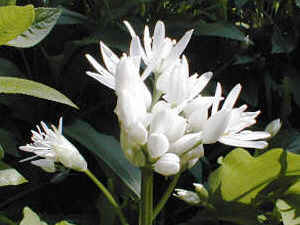 |
Lesser Celandine |
Wood Anemone |
'Wild Garlic' (
carpeting the wood above ) |
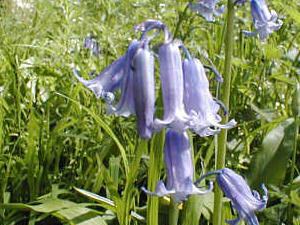 |
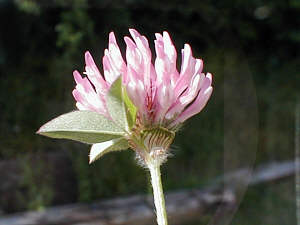 |
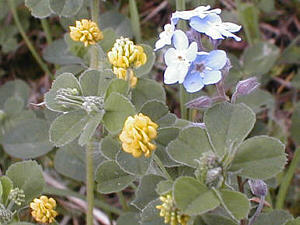 |
Bluebells |
Red Clover |
Black Medick and Forgetmenot |
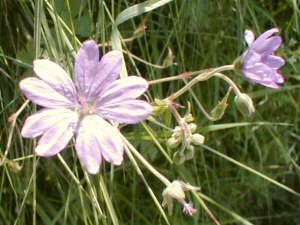 |
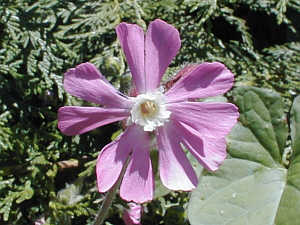 |
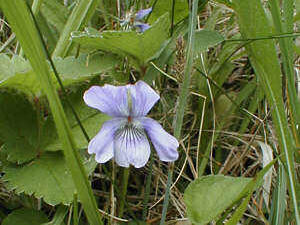 |
Hedgerow Cranesbill |
Red Campion |
Violet |
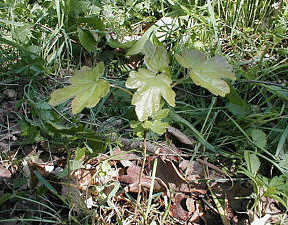 |
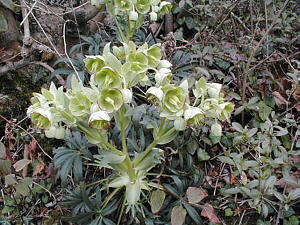 |
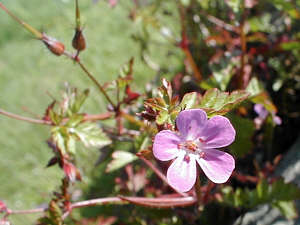 |
Field Maple Sapling |
Stinking Hellebore |
Herb Robert |
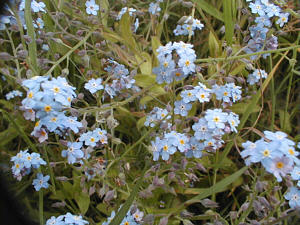 |
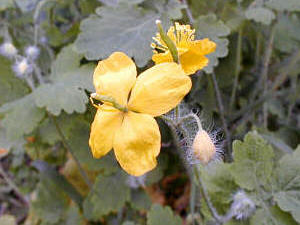 |
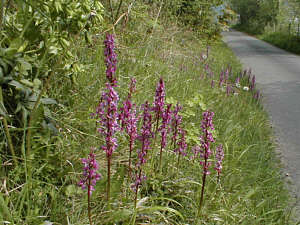 |
Irrepressible Forgetmenots |
Greater Celandine |
Early Orchids |
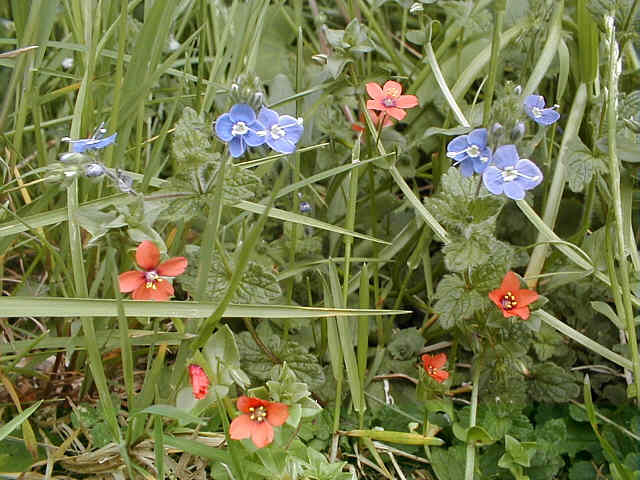 |
Scarlet Pimpernel and Common
Speedwell |
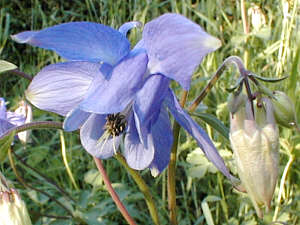 |
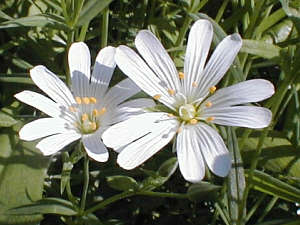 |
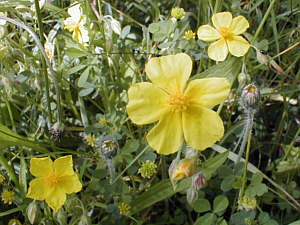 |
Columbine |
Bladder Campion |
Rock Rose |
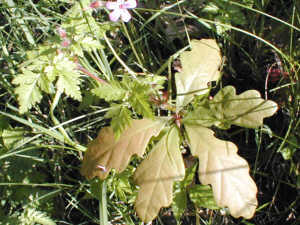 |
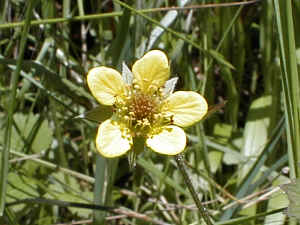 |
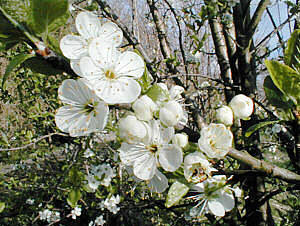 |
Sessile Oak Sapling |
Herb Bennet |
Wild Plum Blossom |
Other flower varieties not included in the above because of space restrictions and timing are:-
Common Vetch, Dog Rose, Wood Sorrel, Birdsfoot Trefoil, Wild Strawberry, Foxglove, Poppy, Goatsbeard, Ragwort, Harebells, Nettle Leaved Bell Flower, Archangel, White Dead Nettle, Hemp Nettle, Great Mullein, Calamint, Green Alkanet, Common Cleaver, Convolvulus, Rosebay Willowherb, Common Mallow, Sandwort, and a number of white and yellow Umbellifers, and also Thistle, Dock, Nettle, Buttercups, Daisies and Dandelions no less !
All images were taken with an Olympus 830L digicam, and some with the help of a 5" focal length supplementary lens in macro mode. (Difficulty was experienced during windy conditions and hence some of the images unfortunately are not sharp).
Click here for a Micscape article by the author on using a supplementary lens with the Olympus 830L digital camera.
| Comments welcome to Paul James. |
Published in the June 2000 edition of Micscape Magazine.
Please report any Web problems
or offer general comments to the Micscape Editor,
via the contact on current Micscape Index.
Micscape is the on-line monthly
magazine of the Microscopy UK web
site at Microscopy-UK